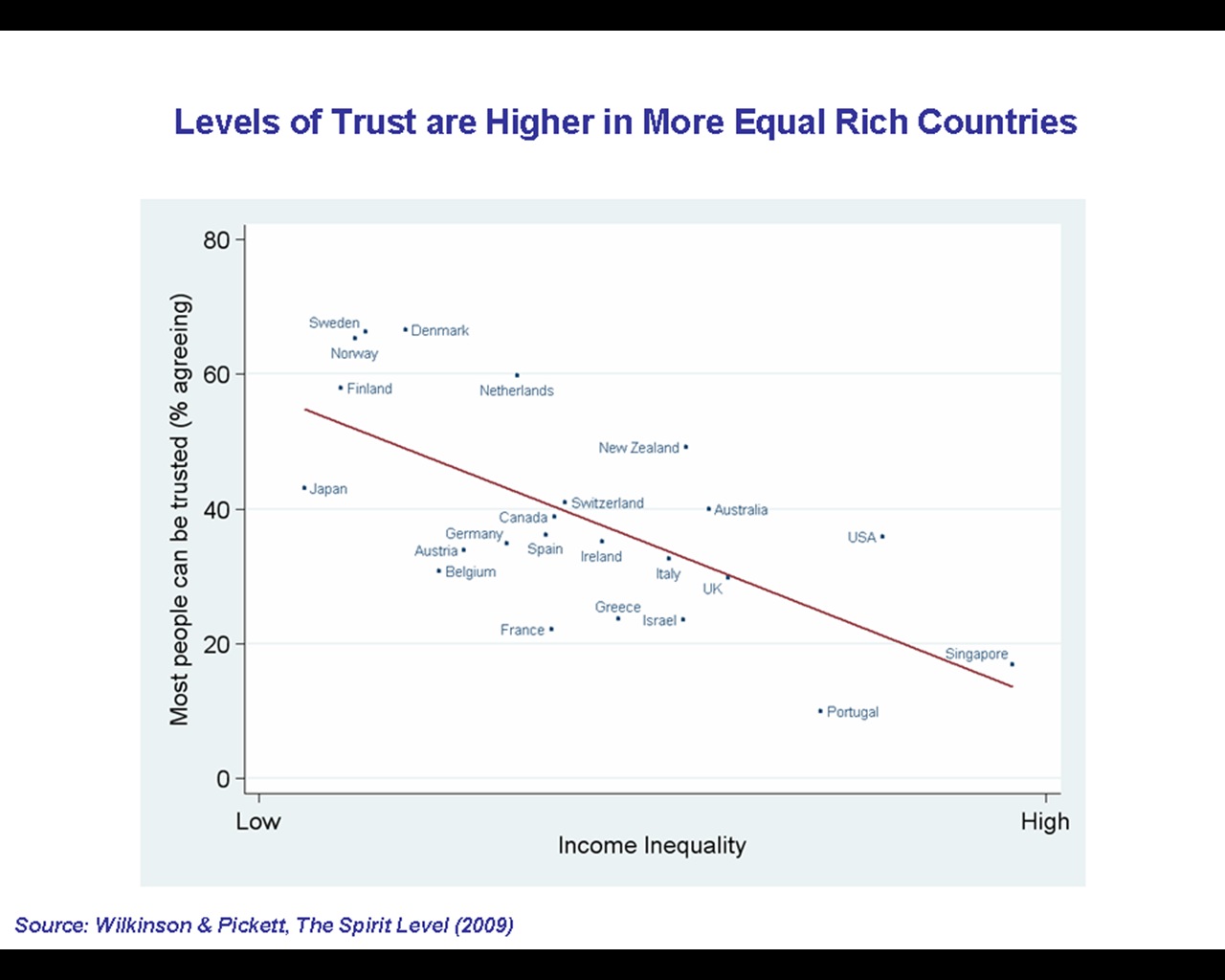|
Popularisation
In sociology, popularity is how much a person, idea, place, item or other concept is either liked or accorded status by other people. Liking can be due to reciprocal liking, interpersonal attraction, and similar factors. Social status can be due to dominance, superiority, and similar factors. For example, a kind person may be considered likable and therefore more popular than another person, and a wealthy person may be considered superior and therefore more popular than another person. There are two primary types of interpersonal popularity: perceived and sociometric. Perceived popularity is measured by asking people who the most popular or socially important people in their social group are. Sociometric popularity is measured by objectively measuring the number of connections a person has to others in the group. A person can have high perceived popularity without having high sociometric popularity, and ''vice versa''. According to psychologist Tessa Lansu at the Radboud Univ ... [...More Info...] [...Related Items...] OR: [Wikipedia] [Google] [Baidu] |
Sociology
Sociology is a social science that focuses on society, human social behavior, patterns of Interpersonal ties, social relationships, social interaction, and aspects of culture associated with everyday life. It uses various methods of Empirical research, empirical investigation and critical analysis to develop a body of knowledge about social order and social change. While some sociologists conduct research that may be applied directly to social policy and welfare, others focus primarily on refining the Theory, theoretical understanding of social processes and phenomenology (sociology), phenomenological method. Subject matter can range from Microsociology, micro-level analyses of society (i.e. of individual interaction and agency (sociology), agency) to Macrosociology, macro-level analyses (i.e. of social systems and social structure). Traditional focuses of sociology include social stratification, social class, social mobility, sociology of religion, religion, secularization, S ... [...More Info...] [...Related Items...] OR: [Wikipedia] [Google] [Baidu] |
Mean Girls
''Mean Girls'' is a 2004 American teen comedy film directed by Mark Waters and written by Tina Fey. The film stars Lindsay Lohan, Rachel McAdams, Lacey Chabert, Amanda Seyfried (in her film debut), Tim Meadows, Ana Gasteyer, Amy Poehler and Fey. It is based in part on Rosalind Wiseman's 2002 non-fiction self-help book, ''Queen Bees and Wannabes'', which describes female high school social cliques, school bullying, and the damaging effects they can have on students. Fey also drew from her own experience at Upper Darby High School as an inspiration for some of the concepts in the film. The plot centers on a naïve teenage girl navigating her way through the social hierarchy of a modern American high school after years of her parents homeschooling her while conducting research in Africa. ''Saturday Night Live'' creator Lorne Michaels produced the film. Fey, screenwriter and co-star of the film, was a long-term cast member and writer for ''SNL''. Although set in the Chicago suburb ... [...More Info...] [...Related Items...] OR: [Wikipedia] [Google] [Baidu] |
Facebook
Facebook is an online social media and social networking service owned by American company Meta Platforms. Founded in 2004 by Mark Zuckerberg with fellow Harvard College students and roommates Eduardo Saverin, Andrew McCollum, Dustin Moskovitz, and Chris Hughes, its name comes from the face book directories often given to American university students. Membership was initially limited to Harvard students, gradually expanding to other North American universities and, since 2006, anyone over 13 years old. As of July 2022, Facebook claimed 2.93 billion monthly active users, and ranked third worldwide among the most visited websites as of July 2022. It was the most downloaded mobile app of the 2010s. Facebook can be accessed from devices with Internet connectivity, such as personal computers, tablets and smartphones. After registering, users can create a profile revealing information about themselves. They can post text, photos and multimedia which are shared with any ... [...More Info...] [...Related Items...] OR: [Wikipedia] [Google] [Baidu] |
Mere-exposure Effect
The mere-exposure effect is a psychological phenomenon by which people tend to develop a preference for things merely because they are familiar with them. In social psychology, this effect is sometimes called the familiarity principle. The effect has been demonstrated with many kinds of things, including words, Chinese characters, paintings, pictures of faces, geometric figures, and sounds. In studies of interpersonal attraction, the more often people see a person, the more pleasing and likeable they find that person. Research Gustav Fechner conducted the earliest known research on the effect in 1876. Edward B. Titchener also documented the effect and described the "glow of warmth" felt in the presence of something familiar; however, his hypothesis was thrown out when results showed that the enhancement of preferences for objects did not depend on the individual's subjective impressions of how familiar the objects were. The rejection of Titchener's hypothesis spurred further resear ... [...More Info...] [...Related Items...] OR: [Wikipedia] [Google] [Baidu] |
Group Cohesiveness
Group cohesiveness (also called group cohesion and social cohesion) arises when bonds link members of a social group to one another and to the group as a whole. Although cohesion is a multi-faceted process, it can be broken down into four main components: social relations, task relations, perceived unity, and emotions. Members of strongly cohesive groups are more inclined to participate readily and to stay with the group. Definition From Neo-Latin and French , in physics, cohesion means "the force that unites the molecules of a liquid or of a solid". Thereby, there are different ways to define group cohesion, depending on how researchers conceptualize this concept. However, most researchers define cohesion to be task commitment and interpersonal attraction to the group. Cohesion can be more specifically defined as the tendency for a group to be in unity while working towards a goal or to satisfy the emotional needs of its members. This definition includes important aspects of c ... [...More Info...] [...Related Items...] OR: [Wikipedia] [Google] [Baidu] |
High Schools In The United States
Secondary education in the United States is the last six or seven years of statutory formal education, including or (varies by states and sometimes by district) through . It occurs in two phases. The first is the ISCED lower secondary phase, a middle school or junior high school for students through . The second is the ISCED upper secondary phase, a high school or senior high school for students through . There is some debate over the optimum age of transfer, and variation in some states; also, middle school often includes grades that are almost always considered primary school. History High school enrollment increased when schools at this level became free, laws required children to attend until a certain age, and it was believed that every American student had the opportunity to participate regardless of their ability. In 1892, in response to many competing academic philosophies being promoted at the time, a working group of educators, known as the "Committee of Ten" wa ... [...More Info...] [...Related Items...] OR: [Wikipedia] [Google] [Baidu] |
Relational Aggression
Relational aggression or alternative aggressionSimmons, Rachel (2002). ''Odd Girl Out: The Hidden Culture of Aggression in Girls''. New York, New York: Mariner Books. pp. 8–9. . Retrieved 2016-11-02. is a type of aggression in which harm is caused by damaging someone's relationships or social status.McGrath, Mary Zabolio (2006). ''School Bullying: Tools for Avoiding Harm and Liability''. Thousand Oaks, Calif: Corwin Press. p. 21. . Retrieved 2008-09-04.Marion K. Underwood (2003). ''Social Aggression among Girls (Guilford Series On Social And Emotional Development) ''. New York: The Guilford Press. . Retrieved 2008-09-04 Although it can be used in many contexts and among different age groups, relational aggression among adolescents in particular, has received a lot of attention. The attention relational aggression has received has been augmented by the help of popular media, including movies like ''Mean Girls'' and books like ''Odd Girl Out'' by Rachel Simmons (2002), ''Nesthä ... [...More Info...] [...Related Items...] OR: [Wikipedia] [Google] [Baidu] |
Halo Effect
The halo effect (sometimes called the halo error) is the tendency for positive impressions of a person, company, brand, or product in one area to positively influence one's opinion or feelings in other areas. Halo effect is “the name given to the phenomenon whereby evaluators tend to be influenced by their previous judgments of performance or personality.” The halo effect is a cognitive bias which can possibly prevent someone from accepting a person, a product or a brand based on the idea of an unfounded belief on what is good or bad. The term was coined by Edward Thorndike. A simplified example of the halo effect is when a person notices that an individual in a photograph is attractive, well groomed, and properly attired, they assume, using a mental heuristic, that the person in the photograph is a good person based upon the rules of their own social concept. This constant error in judgment is reflective of the individual's preferences, prejudices, ideology, aspirations, a ... [...More Info...] [...Related Items...] OR: [Wikipedia] [Google] [Baidu] |
Physical Attractiveness
Physical attractiveness is the degree to which a person's physical features are considered aesthetically pleasing or beautiful. The term often implies sexual attractiveness or desirability, but can also be distinct from either. There are many factors which influence one person's attraction to another, with physical aspects being one of them. Physical attraction itself includes universal perceptions common to all human cultures such as facial symmetry, sociocultural dependent attributes and personal preferences unique to a particular individual. In many cases, humans subconsciously attribute positive characteristics, such as intelligence and honesty, to physically attractive people, a psychological phenomenon called the Halo effect. From research done in the United States and United Kingdom, it was found that objective measures of physical attractiveness and intelligence are positively correlated and that the association between the two attributes is stronger among men than am ... [...More Info...] [...Related Items...] OR: [Wikipedia] [Google] [Baidu] |
1922 Locust Yearbook P
Nineteen or 19 may refer to: * 19 (number), the natural number following 18 and preceding 20 * one of the years 19 BC, AD 19, 1919, 2019 Films * ''19'' (film), a 2001 Japanese film * ''Nineteen'' (film), a 1987 science fiction film Music * 19 (band), a Japanese pop music duo Albums * ''19'' (Adele album), 2008 * ''19'', a 2003 album by Alsou * ''19'', a 2006 album by Evan Yo * ''19'', a 2018 album by MHD * ''19'', one half of the double album ''63/19'' by Kool A.D. * ''Number Nineteen'', a 1971 album by American jazz pianist Mal Waldron * ''XIX'' (EP), a 2019 EP by 1the9 Songs * "19" (song), a 1985 song by British musician Paul Hardcastle. * "Nineteen", a song by Bad4Good from the 1992 album ''Refugee'' * "Nineteen", a song by Karma to Burn from the 2001 album ''Almost Heathen''. * "Nineteen" (song), a 2007 song by American singer Billy Ray Cyrus. * "Nineteen", a song by Tegan and Sara from the 2007 album '' The Con''. * "XIX" (song), a 2014 song by Slipknot. ... [...More Info...] [...Related Items...] OR: [Wikipedia] [Google] [Baidu] |
Incentive Salience
Motivational salience is a cognitive process and a form of attention that ''motivates'' or propels an individual's behavior towards or away from a particular stimulus (psychology), object, perceived event or outcome. Motivational salience regulates the intensity of behaviors that facilitate the attainment of a particular goal, the amount of time and energy that an individual is willing to expend to attain a particular goal, and the Risk aversion (psychology), amount of risk that an individual is willing to accept while working to attain a particular goal. Motivational salience is composed of two component processes that are defined by their attractive or aversive effects on an individual's behavior relative to a particular stimulus: ''incentive salience'' and ''aversive salience''. Incentive salience is the attractive form of motivational salience that causes approach behavior, and is associated with operant reinforcement, reward system, desirable outcomes, and pleasurable stimuli ... [...More Info...] [...Related Items...] OR: [Wikipedia] [Google] [Baidu] |






